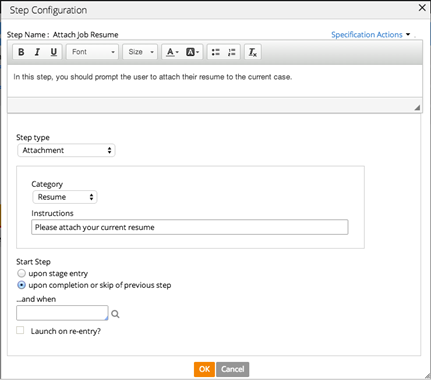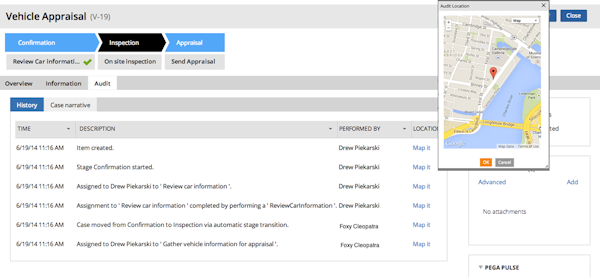Enable business users to own parts of an enterprise application
Valid from Pega Version 7.1.6
Decision Manager functionality allows business users to own parts of an enterprise application within the boundaries defined by IT. PegaDM includes the Pega-DecisionManager ruleset that supports this functionality.
System architects define the boundaries for business users in the Decision Manager portal using revision management and proposition authorization facilities in Designer Studio. Access control is provided through custom roles, which system architects can create based on granular privileges. The Decision Manager portal provides business users with a controlled environment for the workflow, and the activities necessary to address the objectives of a revision.
Predefined inputs when designing and testing strategies
Valid from Pega Version 7.1.6
External input settings allow for propagating results to other strategies, providing strategy designers with a mechanism to reuse strategies and test strategies with predefined inputs.
Design segmentation trees in strategies
Valid from Pega Version 7.1.6
You can include the traditional segmentation tree pattern in your strategies using the following features:
- Exclusion components to conditionally stop the propagation of decision results.
- Split components to branch the decision results according to the percentage of cases covered by the result.
- The Otherwise label for component connections where one of the outgoing connections has a defined label.
Simplified Adaptive Decision Manager Deployment
Valid from Pega Version 7.1.6
The Adaptive Decision Manager (ADM) server relies on automatic detection of the database dialect. This simplifies the number of deployable archives used to set up the ADM service.
Cumulative calculation in strategies
Valid from Pega Version 7.1.6
Iteration components provide strategies with a mechanism to perform cumulative calculations.
Create data page from REST integration
Valid from Pega Version 7.1.6
When you create a REST integration, you can choose to create a data page (and its related data type and data transforms) that can use the integration as one of its sources.
Quickly add an attachment step to your processes
Valid from Pega Version 7.1.6
The Attachment step allows you to quickly add an Attach Content subprocess to your flow. Once added, choose the attachment type and instructions to present to users:

Add search fields to forms
Valid from Pega Version 7.1.6
A Search field type is available in the Form Configuration dialog. This field enables users to search for and select a specific record from a list-type data page. Configuration is straightforward, as shown below:

At runtime, users search on the key field and any additional specified search fields. The user interface automatically refreshes, enabling dynamic results when selecting a search field.
Service level available for flows
Valid from Pega Version 7.1.6
Service level agreements can now be associated with individual flows. This feature is especially useful for establishing goals and deadlines for flows within a stage-based process. The setting is located on the flow record Process tab.
Track the geolocation of audit trail actions
Valid from Pega Version 7.1.6
The geolocation tracking feature allows you to capture latitude and longitude information each time a requestor entry is recorded in the audit trail. A Map it link appears in the Location column on the Audit tab's History tab. Clicking the link renders a Google Map that displays the location based on the coordinates.
To enable this feature, copy the standard when rule pyGeolocationTrackingIsEnabled to your application. You can customize the "default always true" condition to suit your requirements. For example, you can set up a privilege or role that tracks only mobile users rather than all users.

When you use Application Express to create a new application built on a standard Pega application (such as PegaRULES or PegaDM), the system enables geolocation tracking for all case types. You can disable or enable tracking at the case type level using the Geolocation tracking setting on the Case Designer Details tab.

